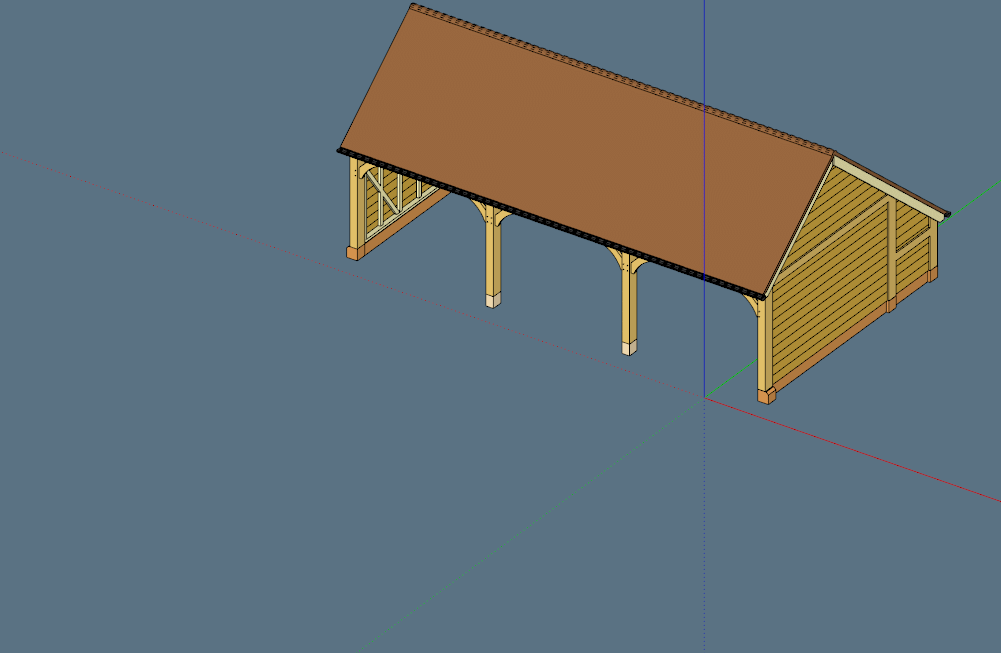Revit to SketchUp my best workflow (so far)
-
Not sure what you're after but my workflows and TIG's plugin mentioned above DOES save "tons of efforts".
-
In your present workflow you have to insert textures manually, material by material.
What I meant is: AFTER all TIG's routines, it could be perfect SWAP texture-less materials with your favorite ones (with bitmaps in) by applying single-click 'material replacer'. unfortunately it doesn't keep original revit names. -
I never said it was the "ultimate Revit to SketchUp workflow". Only that it was my best workflow so far.
If you don't need to edit inside SketchUp you could try the FBX route to keep textures.
The architects at my office seldom put materials and textures on models in Revit so for me the main problems have been:
A. To get the Revit model into SketchUp in a editable way with different materials for Window frames and glass and other such geometry that takes ages to fix manually.
B. To be able to easily update to a newer version of the Revit model and keep materials (with textures) that I have made inside SketchUp.The workflow above does that better than any other existing method I know of.
But I'd gladly be proven wrong if there exists a better way...Edit. You could use TIG' global material changer to change imported materials to your own favorite ones but you would lose the material names and not be able to update the model easily.
@TIG: Maybe a custom version of that script could be made that kept the original material name and just swapped all the other material settings and texture? Including renderer specific attribute settings like Thea or Vray.
-
@unknownuser said:
@TIG: Maybe a custom version of that script could be made that kept the original material name and just swapped all the other material settings and texture? Including renderer specific attribute settings like Thea or Vray.
well it'd be ideal

Let me ask you Why do you bother to import revit to SU? Do you render inside SU or playing with design alternatives? Is Revit too rigid to get refined result?
Since my bosses started to adopt Revit, I see Sketchup as intermediate station between Revit to MaxVray. That's why it's important to keep original naming. -
Well, mainly I create visualization in SketchUp from Revit files and more often than not some things need to be altered or modified for the image that the construction model doesn't have or need.
Sometimes one of my colleagues might want to try different designs in SketchUp because they might be quicker to create there or almost impossible to do in Revit. -
Could you explain step by step how you might do this material rename/replace with color/texture etc 'manually'.
Then I can consider if it's possible in a modified version of my code... -
Lets say you have an imported Revit model with a material named RevitMat.
In SU you have a material named SUmat.
I was thinking you could clone SUmat, (would that keep any render specific settings?) apply it to the model and change the name to RevitMat.
Or something like that.Or maybe it would be easier to copy all material settings including attributes directly to RevitMat?
-
It could look this way:
The Script window has 2 areas (left and right)
In the left one, user would load (need corresponding button) materials from a certain library.
In the right one, user loads materials from preselected 'recipient' geometry.Then user would start to form pairs from left and right window ( from left it'd take all properties, from right- name); after pairing entities in both windows should change color)
Script should allow multiple use of the same donor material (from the left field)There should be an extra button:
'Apply material replacement from existing material collection (with the same names)'
-
Or, simply edit existing TT's Material Replace tool so it would keep the recipients mat name.
It doesn't allow automatic material swapping in the future, but still better than nothing.

-
I agree with Pixero on this one. This is the best workflow. I have been doing the same for years on many projects. Also, when your client sends an updated Revit export, you can just use the method above and then use ThomThoms replace material from the old model to the new model. The entire process is very quick.
The one caveat with working with Revit imports is that I always find that SketchUp tends to run very weighed down, so try to replace as much Revit garbage as you can such as railings, fixtures, furniture, etc. with SU components that are clean.
Jut yesterday I imported a model with terrible columns that had millions a tiny little triangles. They were so heavy and the 10 min it took to swap them out was well worth it.
Advertisement







